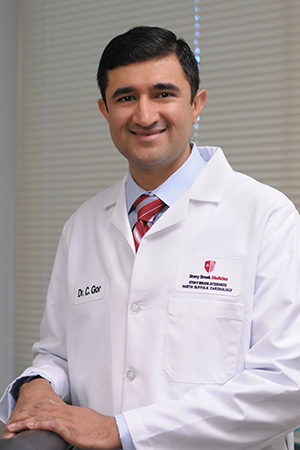
Written by Chirayu V. Gor, MD, FACC
To understand what encompasses pulmonary hypertension, I like to think about how blood flows into the heart. First, blood will flow into the two right-sided heart chambers—the right atrium and the right ventricle. The right atrium is the top chamber and the right ventricle is the bottom chamber. The right ventricle will pump the blood through the pulmonary arteries and into the lungs to get oxygenated. The blood will re-enter the left side of the heart into the left atrium and then into the left ventricle. The left ventricle pumps blood out of the heart into the aorta and out to the body.
So, if you think about it, there are really two hearts—the right heart and the left heart. Pulmonary hypertension is elevated blood pressure involving the right side of the heart and pulmonary artery. Over time, when the pressure builds up on the right side of the heart, patients will develop symptoms that include shortness of breath and swelling of the legs. Sometimes, the elevated right-sided blood pressure distorts the shape of the right ventricle and pulmonary artery. Many patients will notice a decline in functional activity. They may find it difficult to walk from one room to another, make their bed or go grocery shopping due to shortness of breath.
There are many causes of pulmonary hypertension such as connective tissue diseases (scleroderma), chronic heart failure, valve disease, chronic lung diseases such as COPD, sleep apnea, blood clots and other disorders. Sometimes, pulmonary hypertension is diagnosed without an identifiable cause and is termed idiopathic pulmonary hypertension.
Evaluating the cause of pulmonary hypertension includes various tests and may involve a CT scan of the chest, specialized blood tests, and cardiac catheterization. Often, patients will need the expertise of a pulmonologist and rheumatologist to exclude some of the causes of pulmonary hypertension. There is treatment for pulmonary hypertension and it is tailored to the patient after workup is completed. The mainstay of treatment is to improve breathing and quality of life.

